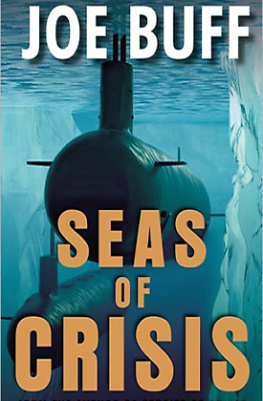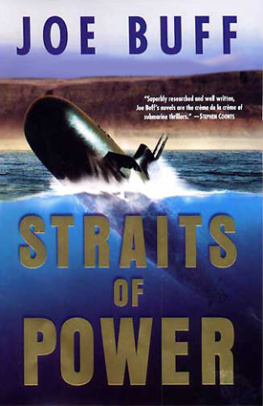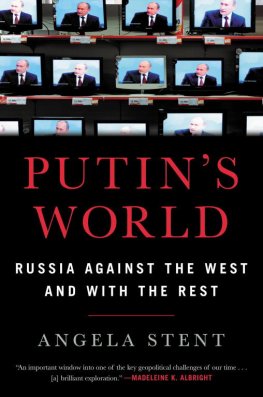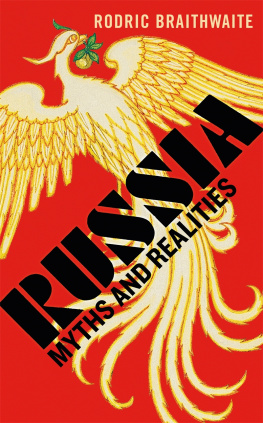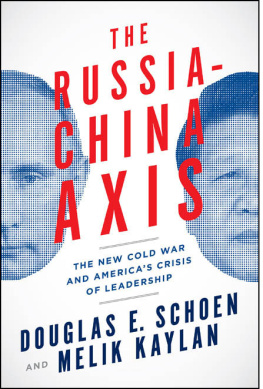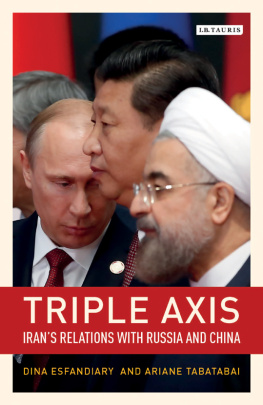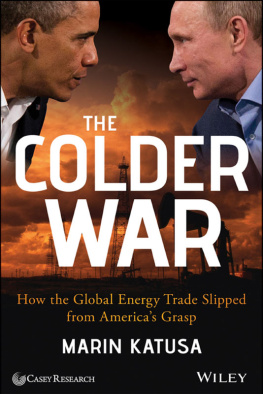JOE BUFF is a life member of the U.s. naval Institute, the naval submarine league, the navy league of the United states, the cec/seabees historical Foundation, and the Fellows of the naval War college. respected for his technical knowledge, he is considered an expert in submarines and national defense. two of his nonfiction articles about future submarine technology have won annual literary awards from the naval submarine league. he is the author of four previous highly regarded novels of submarine warfare Tidal Rip, Crush Depth, Thunder in the Deep , and Deep Sound Channel and lives with his wife in dutchess county, new York. You can visit his website at www.joebuff.com .
Visit www.AuthorTracker.com for exclusive information on your favorite HarperCollins authors.
T o begin, I want to thank my formal manuscript readers: Captain Melville Lyman, U.S. Navy (retired), commanding officer of several SSBN strategic missile submarines, until recently Director for Special Weapons Safety and Surety at the Johns Hopkins Applied Physics Laboratory, and now doing similar work at a major private contractor; Commander Jonathan Powis, Royal Navy, who was Navigator on the fast-attack submarine HMS Conqueror during the Falklands Crisis, and who subsequently commanded three different British submarines; retired senior chief Bill Begin, veteran of many boomer deterrent patrols; and Peter Petersen, who served in the German Navys U-518 in World War II. Thanks also go to two Navy SEALs, Warrant Officer Bill Pozzi and Commander Jim Ostach, and to Lieutenant Commander Jules Steinhauer, USNR (Ret.), diesel boat veteran and naval aviation submarine liaison in the early Cold War, for their feedback and support. In that latter category I must also include the many new friends and acquaintances Ive made since joining the United States Submarine Veterans, Inc. (USSVI) as a sponsored Life Associate Member, and the Navy Seabee Veterans of America (NSVA) as an Honorary Life Associate Member, during 2004.
A number of other Navy people gave valuable guidance: George Graveson, Jim Hay, and Ray Woolrich, all retired U.S. Navy captains, former submarine skippers, and active in the Naval Submarine League; Ralph Slane, vice president of the New York Council of the Navy League of the United States, and docent of the Intrepid Museum; Ann Hassinger, research librarian at the U.S. Naval Institute; Bill Kreher, operations director of the Naval Submarine League; Chris Michel, founder and president of Military Advantage, Inc.; and retired reserve U.S. Navy Seabee Chief Stormin Normand Dupuis.
Additional submariners and military contractors deserve acknowledgment. They are too many to name here, but continuing to stand out vividly in my mind are pivotal conversations with Commander (now Captain) Mike Connor, at the time CO of USS Seawolf, and with the late Captain Ned Beach, USN (Ret.), brilliant writer and great submariner. I also want to thank, for the guided tours of their fine submarines, the officers and men of USS Alexandria, Connecticut, Dallas, Hartford, Memphis, Salt Lake City, Seawolf, Springfield, Topeka, and Virginia, and the modern German diesel submarine U-15. I owe deep appreciation to everyone aboard USS Miami for four wonderful days on and under the sea.
Similar thanks go to the instructors and students of the New London Submarine School, and the Coronado BUD/SEAL training facilities, and to all the people who demonstrated their weapons, equipment, attack vessels, and aircraft, at the Amphibious Warfare bases in Coronado and Norfolk. Appreciation also goes to the men and women of the aircraft carrier USS Constellation, the Aegis guided missile cruiser USS Vella Gulf, the fleet replenishment oiler USNS Pecos, and so many other Navy folks.
The Current Strategy Forums and publications of the Naval War College were invaluable. Flying out to the amphibious warfare helicopter carrier USS Iwo Jima during New York Citys Fleet Week 2002, and joining with her sailors and marines in rendering honors as the ship passed September 11ths Ground Zero, was one of the most powerfully emotional experiences of my life.
First among the publishing people deserving acknowledgment is my wife, Sheila Buff, a bestselling nonfiction author and co-author of books on health, wellness, and related topics. Then comes my agent, John Talbot, spirit guide for seven years now on all aspects of the writing profession. Equally crucial is my William Morrow editor, Mike Shohl, always full of keen insights on improving my outlines and manuscript drafts.
Australia
HarperCollins Publishers (Australia) Pty. Ltd.
25 Ryde Road (P.O. Box 321)
Pymble, NSW 2073, Australia
www.harpercollins.com.au/ebooks
Canada
HarperCollins Canada
2 Bloor Street East - 20th Floor
Toronto, ON, M4W, 1A8, Canada
http://www.harpercollins.ca
New Zealand
HarperCollins Publishers (New Zealand) Limited
P.O. Box 1
Auckland, New Zealand
http://www.harpercollins.co.nz
United Kingdom
HarperCollins Publishers Ltd.
77-85 Fulham Palace Road
London, W6 8JB, UK
http://www.harpercollins.co.uk
United States
HarperCollins Publishers Inc.
10 East 53rd Street
New York, NY 10022
http://www.harpercollins.com
S EAS OF C RISIS
S TRAITS OF P OWER
T IDAL R IP
C RUSH D EPTH
T HUNDER IN THE D EEP
D EEP S OUND C HANNEL
Late June 2012
W ar isnt hell, its worse than hell, Commander Jeffrey Fuller told himself. He sat alone in his captains stateroom on USS Challenger , whose ceramic composite hull helped her to be Americas most capable nuclear-powered fast-attack submarine. Jeffreys many successes, during tactical atomic combat at sea in a war that the Berlin-Boer Axis had started a year earlier, had made him one of the most highly decorated submariners in U.S. Navy history. But his Medal of Honor, his two Navy Crosses, his Defense Distinguished Service Medal, and his crews receipt of a Presidential Unit Citation all put together couldnt dispel Jeffreys present dark mood.
Challenger was five days outbound from Pearl Harbor, deeply submerged and steaming due north, already past the Aleutian Islands chain that stretched between mainland Alaska and Siberia. She was bound for the New London submarine base, on Connecticuts Thames River, having been sent by the shortest possible route: through the narrow Bering Strait choke point looming a few hundred miles ahead, separating the easternmost tip of pseudo-neutral Russia from Alaskas desolate Cape Prince of Wales. Jeffrey would sail past Alaska and Arctic Canada. Then hed sneak through the shallow waters between Canada and Greenland, into the Atlantic, to arrive at home port in two weeks for a reception he already dreaded.
Thered been no medals awaiting Jeffrey or his people at Pearl to recognize their newest accomplishments, despite an earlier message implying there would be. No one was allowed to go ashore. Challenger had been told to hide underwater, off Honolulu, taking on minimal supplies and spare parts via minisub. No admirals came to shake hands, no squadron commodore gave any pats on the back. And Jeffrey was sure he knew why.
Hed broken too many unwritten rulestoo many even for himon his latest mission spanning half the globe. Hed stepped on too many toes, made too many well-placed political enemies in Washington, while exercising initiative that had seemed to make sense at the time. In something that verged on a shouting match, hed quashed an onboard CIA expert whose advice he was supposed to respect. On his own accord hed clandestinely violated a crucial allys sovereignty, planting seeds for what could still become a disastrous diplomatic incident. Worst, while obeying ironclad orders to preserve his own ships stealth at all cost, he and everyone else on Challenger had had to listen, horrified, doing nothing but flee the fight while dozens of good menfriends and colleaguesdied under Axis attack in the Med on another American submarine.
Next page
